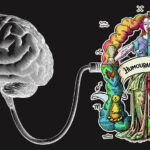Sometimes a simple conversation, regularly undertaken, is the best solution to miscommunication.
One never ceases to marvel at how technologically advanced an age we live in with all sorts of communication gadgetry. And yet, occasionally we are dumbfounded by stories of miscommunication between doctors and nurses.
It’s the patient who was reported to have died in transit from one hospital to another only to be alive the next week still requiring that bed; or being ushered in to admit a patient by well-meaning staff only to find out the history the doctor was given didn’t make sense as it was the wrong patient; or running to one ward at request in haste only to be corrected that it was in fact another.
This is why we embarked on a study of colleagues domestically and internationally to obtain an idea of what the experience of a large group of doctors and nurses was in this area of medicine, and how they perceived it affecting patient management. These colleagues, from both hospital and community practice, were invited to fill in an online survey consisting of 14 designed questions. We had 106 respondents, with an almost even split of doctors (48) and nurses (53), plus five retired doctors.
The most prevalent age group was 45-54 years (26.67%) followed closely by 35-44 (25.71%) with the majority (75%) having trained in Australia. An overwhelming majority (92%) voted this topic as vital. Pleasingly, 48% voted that it has improved during their working time, with 27% stating that it was unchanged and, disappointingly, 17% said it had worsened.
In terms of the standard of communication in participants’ current workplaces, 45% stated that it was good, though 35% stated that a moderate amount of improvement was required.
A sobering 98% of respondents said they had either witnessed or been involved in some form of miscommunication, with 80% agreeing that this contributes to patient care. Prevention of it was voted as possible by 80%, with a variety of reasons causing it such as handwriting, training background and agendas, and poor communication styles.
The efficacy of quoted communication tools (ISBAR, adequate assertiveness, ward rounds, notes in charts) was voted on fairly evenly, with ISBAR voted by far the overwhelming favourite standardised tool.
The last question inviting other observations was well responded to with 60% of participants providing many points, a lot of which revolved around respect, approachability and clarity of the communication between doctor and nurse.
As the survey was anonymous, it was hard to know definitively who was speaking though it was obvious from inference that many were nurses in referring to doctors.
This study arose in part based on the observation that, despite doctors and nurses being in the most technologically advanced era in human history, areas of deficiency in communication between the two professions are not uncommon. These were noted to happen sometimes with comical outcomes, other times with potentially troubling and then, infrequently, serious consequences.
Interestingly, the suggestions for improvement did not involve more use of modern gadgets but rather included time-honoured practices of doctors and nurses talking to each other rather than communicating through notes, allotting specific times for doctors and nurses to ward round together or at least the head nurse and doctor/s setting aside time each shift to talk about patient care.
A recurring point was a priority on passing on any management changes regarding patients and not to assume communication would just happen. There were points made on both sides about a better understanding of what the roles were. At times it was hard to identify who was who, in terms of scope of practice.
Our results confirm our observations that communication between doctors and nurses needs ongoing improvement. Thought needs to be given to whether new tools of communication or learning from the past, blended with modern technology is the way to go.
Maybe this is a case of back to the future communication, old school style.
Dr Richard Wong is a GP and hospitalist and Taylor Caine is a registered nurse, both working in Far North Queensland.






